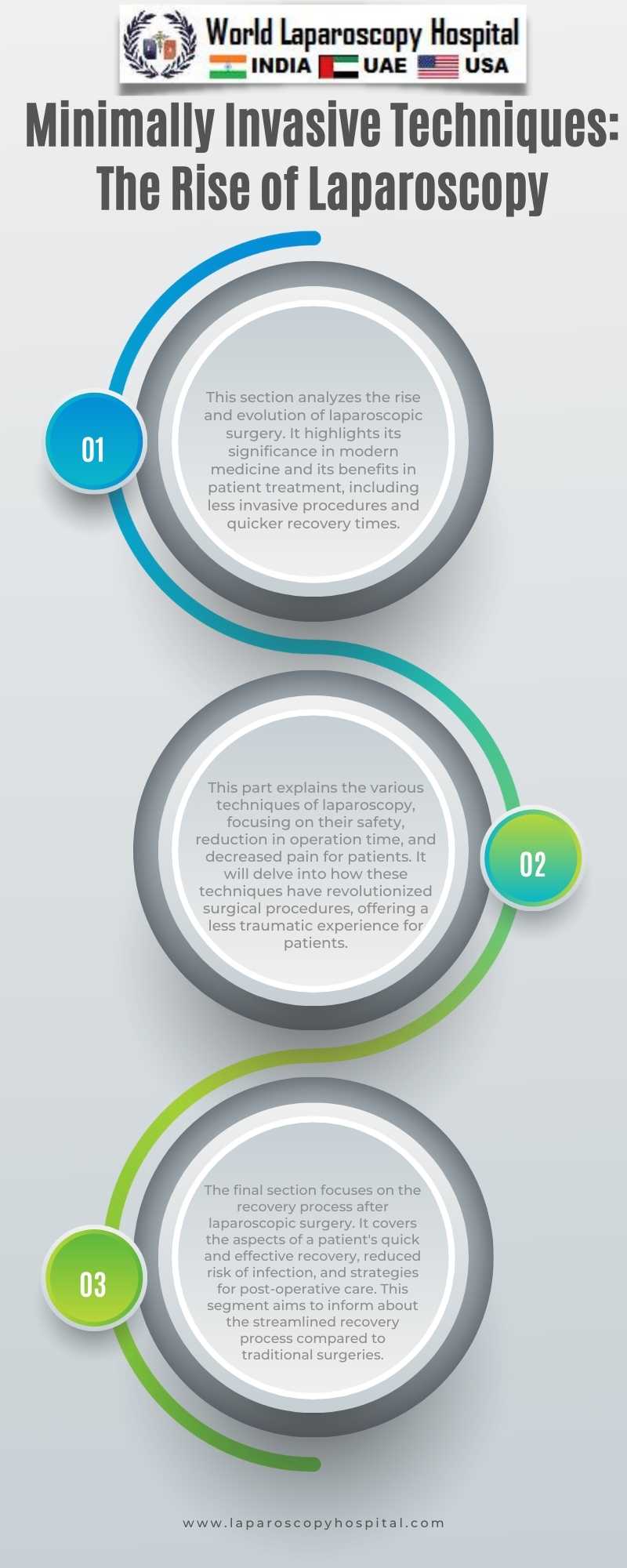Minimally Invasive Techniques: The Rise of Laparoscopy
Minimally invasive techniques, particularly laparoscopy, have revolutionized the field of surgery, offering a less invasive alternative to traditional open procedures. This article delves into the rise of laparoscopy, its benefits, challenges, and future prospects.

The Emergence of Laparoscopy
Laparoscopy, often referred to as keyhole surgery, emerged as a significant surgical technique in the late 20th century. Initially used for diagnostic purposes, it quickly evolved into a therapeutic tool. The technique involves making small incisions, typically less than a half-inch, through which a laparoscope (a thin tube with a camera and light) and surgical instruments are inserted. The surgeon operates while viewing the internal organs on a video monitor.
Advantages Over Traditional Surgery
The advantages of laparoscopy over open surgery are manifold. Firstly, it reduces the size of incisions, leading to less postoperative pain and quicker recovery times. This minimally invasive approach also decreases the risk of infection and reduces scarring. Furthermore, patients often experience shorter hospital stays and faster return to normal activities.
Expansion into Various Specialties
Initially confined to procedures like gallbladder removal and gynecological surgeries, laparoscopy has expanded into a wide range of specialties including urology, gastroenterology, and even cardiac surgery. This expansion is a testament to the versatility and effectiveness of the technique.
Technological Advancements
The advancement in laparoscopic equipment and techniques has been pivotal in its widespread adoption. High-definition cameras, improved surgical instruments, and the integration of robotic technology have enhanced the precision and safety of laparoscopic procedures.
Training and Skill Development
The rise of laparoscopy has necessitated specialized training for surgeons. Mastery of laparoscopic techniques requires a different skill set compared to traditional surgery, including hand-eye coordination and proficiency in manipulating instruments without direct hand contact with the organs.
Challenges and Limitations
Despite its advantages, laparoscopy is not without challenges. Complex procedures can have a steep learning curve, and there are limitations in terms of tactile feedback for the surgeon. Additionally, the initial cost of equipment can be a barrier for some healthcare facilities.
Future Prospects
The future of laparoscopy looks promising with ongoing innovations. The integration of artificial intelligence for better decision-making, the development of more sophisticated robotic systems, and advancements in 3D imaging are likely to further enhance its capabilities and applications.
Conclusion
The rise of laparoscopy as a minimally invasive technique marks a significant shift in surgical practices. Its benefits in terms of patient recovery, reduced hospital stays, and overall effectiveness are clear. As technology continues to evolve, laparoscopy is poised to become even more integral in various surgical specialties, improving outcomes and patient experiences.

The Emergence of Laparoscopy
Laparoscopy, often referred to as keyhole surgery, emerged as a significant surgical technique in the late 20th century. Initially used for diagnostic purposes, it quickly evolved into a therapeutic tool. The technique involves making small incisions, typically less than a half-inch, through which a laparoscope (a thin tube with a camera and light) and surgical instruments are inserted. The surgeon operates while viewing the internal organs on a video monitor.
Advantages Over Traditional Surgery
The advantages of laparoscopy over open surgery are manifold. Firstly, it reduces the size of incisions, leading to less postoperative pain and quicker recovery times. This minimally invasive approach also decreases the risk of infection and reduces scarring. Furthermore, patients often experience shorter hospital stays and faster return to normal activities.
Expansion into Various Specialties
Initially confined to procedures like gallbladder removal and gynecological surgeries, laparoscopy has expanded into a wide range of specialties including urology, gastroenterology, and even cardiac surgery. This expansion is a testament to the versatility and effectiveness of the technique.
Technological Advancements
The advancement in laparoscopic equipment and techniques has been pivotal in its widespread adoption. High-definition cameras, improved surgical instruments, and the integration of robotic technology have enhanced the precision and safety of laparoscopic procedures.
Training and Skill Development
The rise of laparoscopy has necessitated specialized training for surgeons. Mastery of laparoscopic techniques requires a different skill set compared to traditional surgery, including hand-eye coordination and proficiency in manipulating instruments without direct hand contact with the organs.
Challenges and Limitations
Despite its advantages, laparoscopy is not without challenges. Complex procedures can have a steep learning curve, and there are limitations in terms of tactile feedback for the surgeon. Additionally, the initial cost of equipment can be a barrier for some healthcare facilities.
Future Prospects
The future of laparoscopy looks promising with ongoing innovations. The integration of artificial intelligence for better decision-making, the development of more sophisticated robotic systems, and advancements in 3D imaging are likely to further enhance its capabilities and applications.
Conclusion
The rise of laparoscopy as a minimally invasive technique marks a significant shift in surgical practices. Its benefits in terms of patient recovery, reduced hospital stays, and overall effectiveness are clear. As technology continues to evolve, laparoscopy is poised to become even more integral in various surgical specialties, improving outcomes and patient experiences.
2 COMMENTS
Dr. Gagandeep Thukral
#1
Dec 25th, 2023 7:38 pm
Laparoscopy's ascent as a minimally invasive technique signifies a pivotal change in surgery. Evident benefits in patient recovery, shorter hospital stays, and overall effectiveness highlight its significance. Advancing technology ensures laparoscopy's increasing integration across surgical specialties, promising improved outcomes and enhanced patient experiences.
Dr. Rakesh Naidu
#2
Jan 4th, 2024 8:02 am
The ascendancy of laparoscopy as a minimally invasive technique marks a transformative shift in surgical practices. Clear benefits include enhanced patient recovery, reduced hospital stays, and overall effectiveness. Evolving technology positions laparoscopy to be even more integral in diverse surgical specialties, further enhancing outcomes and patient experiences.
| Older Post | Home | Newer Post |

